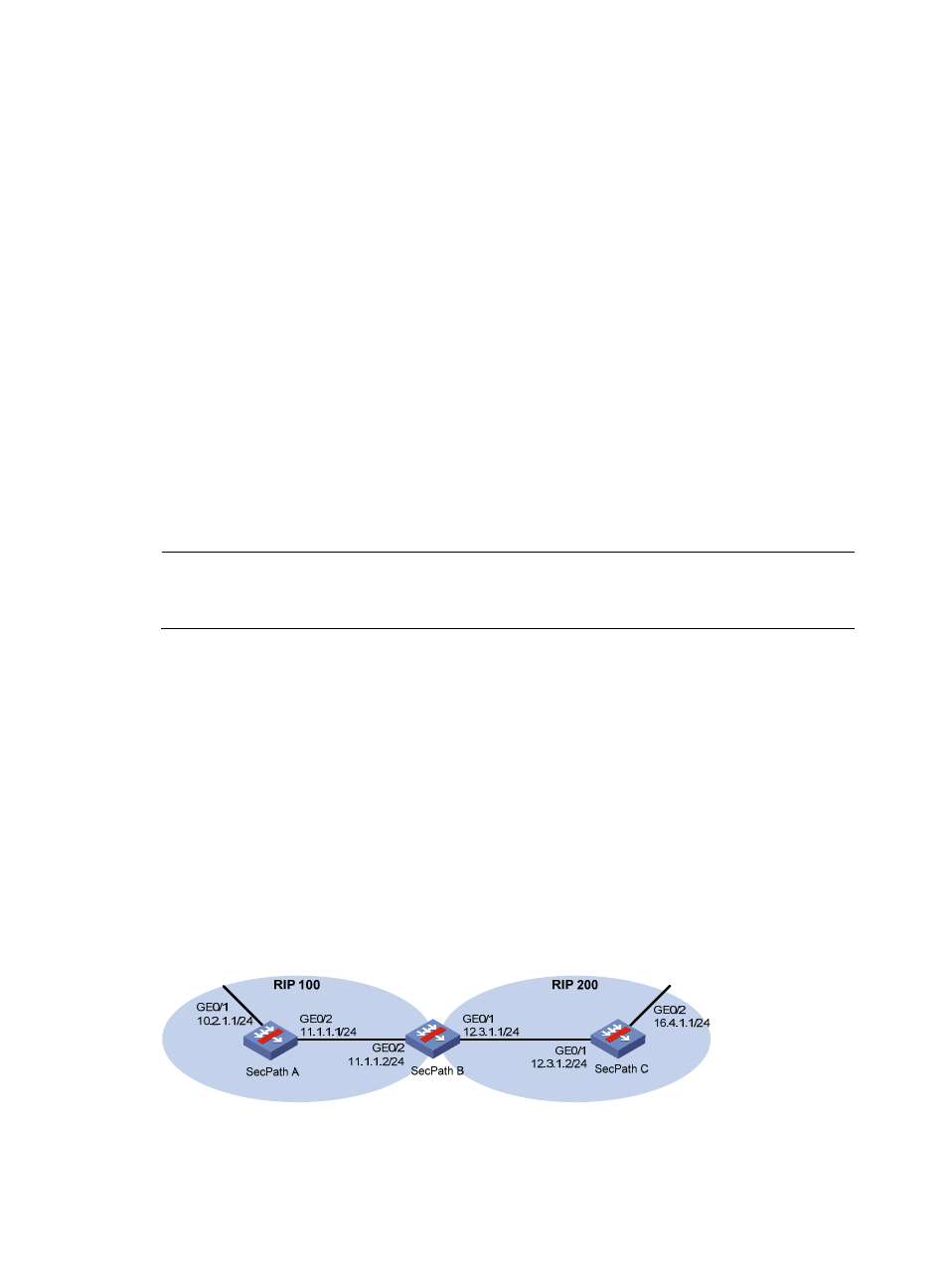Configuring rip route redistribution at the cli, Network requirements, Configuration procedure – H3C Technologies H3C SecPath F1000-E User Manual
Page 390

365
# Configure RIPv2 on Router A.
[RouterA] rip
[RouterA-rip-1] version 2
[RouterA-rip-1] undo summary
# Configure RIPv2 on Router B.
[RouterB] rip
[RouterB-rip-1] version 2
[RouterB-rip-1] undo summary
# Display the RIP routing table of Router A.
[RouterA] display rip 1 route
Route Flags: R - RIP, T - TRIP
P - Permanent, A - Aging, S - Suppressed, G - Garbage-collect
----------------------------------------------------------------------------
Peer 1.1.1.2 on GigabitEthernet0/1
Destination/Mask Nexthop Cost Tag Flags Sec
10.0.0.0/8 1.1.1.2 1 0 RA 87
10.1.1.0/24 1.1.1.2 1 0 RA 19
10.2.1.0/24 1.1.1.2 1 0 RA 19
The output shows that RIPv2 uses classless subnet mask.
NOTE:
Because RIPv1 routing information has a long aging time, it will still exist before being aged out after RIPv2
is configured.
Configuring RIP route redistribution at the CLI
Network requirements
As shown in
:
•
Two RIP processes are running on SecPath B, which communicates with SecPath A through RIP 100
and with SecPath C through RIP 200.
•
Configure RIP 200 to redistribute direct routes and routes from RIP 100 on SecPath B. SecPath C can
then learn routes destined for 10.2.1.0/24 and 11.1.1.0/24, and SecPath A cannot learn routes
destined for 12.3.1.0/24 and 16.4.1.0/24.
•
Configure a filtering policy on SecPath B to filter out the route 10.2.1.1/24 from RIP 100, making the
route not advertised to SecPath C.
Figure 248 Network diagram
Configuration procedure
1.
Configure an IP address for each interface. (Details not shown)